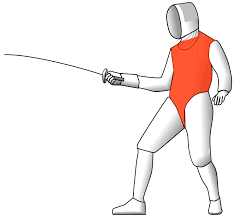Sword tip and its setting
 The joyful moments that a successful and beautiful injection delivers to the athlete are noted, as is known, by the burning lamp of the electric fixator. In order for an injection to be awarded without fail, you need to be sure not only of your own skill, but also of the reliability of your weapon. The most significant problems in this regard are usually associated with the tip of the sword. They are the most difficult to track and correct. If it is impossible not to notice a torn sizing or a broken blade, then it is not always easy to understand about the tip of a sword whether it works as it should or sometimes fails. To successfully cope with the elimination of such malfunctions, you need, firstly, to very well imagine the tip device. Let’s look at it in more detail.
The joyful moments that a successful and beautiful injection delivers to the athlete are noted, as is known, by the burning lamp of the electric fixator. In order for an injection to be awarded without fail, you need to be sure not only of your own skill, but also of the reliability of your weapon. The most significant problems in this regard are usually associated with the tip of the sword. They are the most difficult to track and correct. If it is impossible not to notice a torn sizing or a broken blade, then it is not always easy to understand about the tip of a sword whether it works as it should or sometimes fails. To successfully cope with the elimination of such malfunctions, you need, firstly, to very well imagine the tip device. Let’s look at it in more detail.
The tip consists of a glass, in which a large spring is located and the button itself, which is pressed during the injection. A large spring provides a mass retention of 700 g, i.e. thus, the button is pressed only when the injection is greater than 7 N. Under the large spring is a plastic cylinder (black in the figure), which includes gluing wires. On the other hand, this cylinder has two contacts, which are closed by a small spring on the button. The button is held inside the glass by two small cogs on the sides. Please note that the gluing wires run exactly parallel to each other, without twisting. This is very important for the proper operation of the sword, therefore, when screwing the nozzle cup to the blade, it is necessary to carefully monitor that the sizing wires do not rotate with the cup. It is also important to remember that the sword guard is grounded, and therefore the blade and tip glass are also grounded. If the gluing wires turn out to be loose at the place where they enter the glass, they can bend so that they touch the grounded surface uninsulated. That is why it is important to tighten the wiring
when sizing a sword. The most intractable sword problems are usually associated with the tip. If, having connected to the latch, you find that it does not respond to an injection, first of all, check whether the malfunction is connected with the sword by closing the nearest wire contacts to the guard. If the latch did not work, then other equipment is malfunctioning, if the signal caught fire, then it is still a sword. The most common problems may be:
The sizing on the blade is torn. You can verify this by carefully inspecting the blade for wire breaks. The solution is to glue the sword again, as described, for example, in this article.
Garda ground the wiring in the place where they pass through it. You can find out if this is so by bending the gasket on the sword. This problem can sometimes be solved without re-gluing, simply by building up a torn wire.
The problem is with the tip.
The tip can give different malfunctions, depending on this, the sword may not work, it does not always work, or only with very strong injections, or, on the contrary, it is too easy to fire (at the slightest touch). Sometimes they use such a tool as a slap with a sword on the floor. In this case, the weapon is held horizontally near the floor. If this does not help, then tip tuning is required. To do this, the screws are unscrewed and the entire contour of the sword is checked. To do this, the button and a large spring are removed from the glass and the contacts on the plastic cylinder are closed with a small screwdriver. If at the same time the latch triggers, then the problem is easily solved by changing the length of the small contact spring. If the sword fires too easily, the spring is rotated clockwise so that a slightly larger part of it is on the thread (on which this spring is mounted on the button). If, on the contrary, the sword does not always work or does not work at all, the spring is slightly stretched or twisted slightly from the thread to make it longer. In this case, a probe is necessary in order to check whether the sword works correctly. If the contact closure on the plastic cylinder does not give a result, and the injection is not fixed, then the integrity of the sizing or grounding wires is violated. Most likely you will need a new sizing of the sword.




